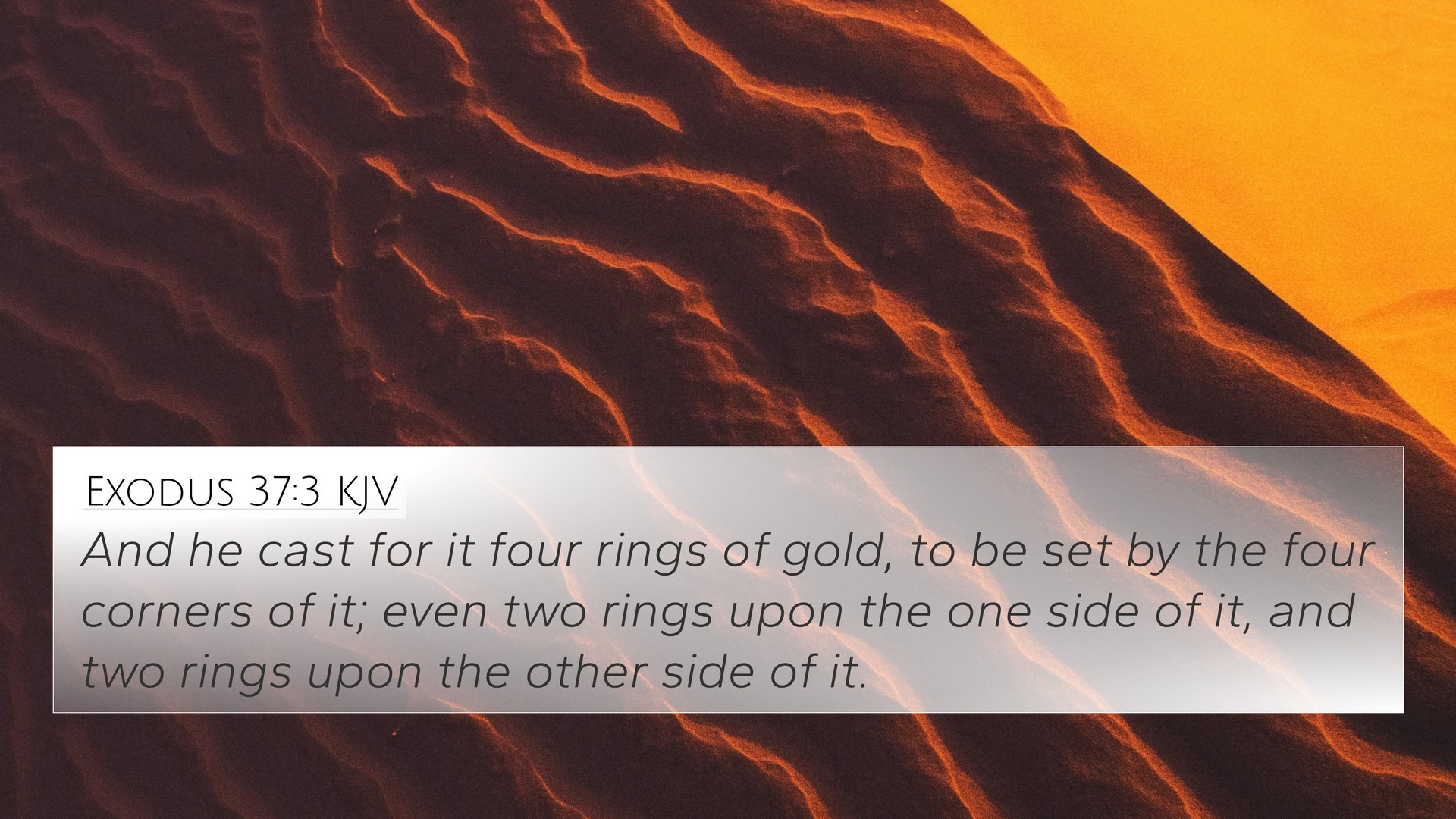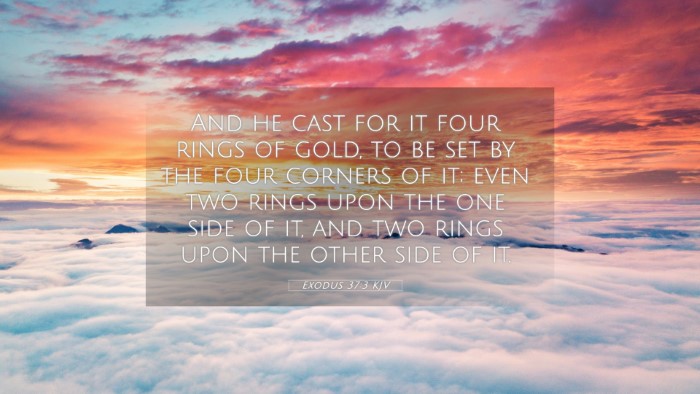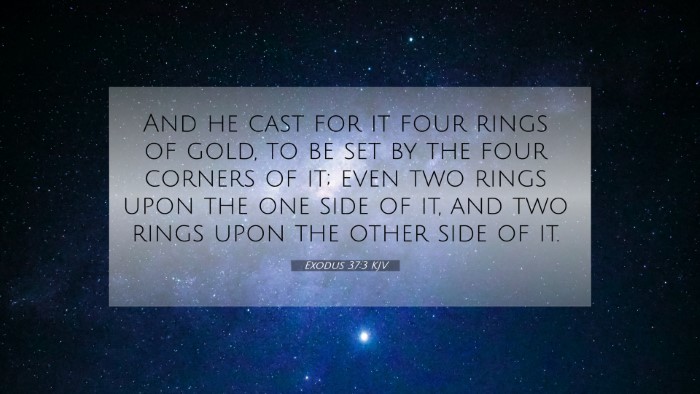Understanding Exodus 37:3
This verse describes the construction of the Ark of the Covenant, specifically focusing on the creation of the mercy seat and its cherubim. The Ark was central to Israel's worship and symbolized God's presence among His people.
Exegesis & Commentary
Interpreters like Matthew Henry, Albert Barnes, and Adam Clarke offer insightful remarks on this passage, emphasizing its significance and the details surrounding its creation.
Matthew Henry's Commentary
Henry highlights that the Ark of the Covenant represented God's covenant with Israel and His presence with them. The mercy seat, placed on top of the Ark, symbolizes God's mercy to His people. The cherubim on either side were not mere decorations; they signified divine guardianship and the heavenly nature of God. This commentary emphasizes the importance of approaching God with reverence and acknowledgment of His holiness.
Albert Barnes’s Notes
Barnes expands on the elaborate design of the Ark and its purpose within the Tabernacle. He argues that the craftsmanship described is meant to reflect the glory of God, mirroring the heavenlies, thus linking our understanding of the Ark to broader themes within scripture. Barnes also connects this to the New Testament, where Christ fulfills the role of the Covenant, enhancing the understanding of divine presence through grace.
Adam Clarke's Commentary
Clarke delves into the specifics of the materials used for the Ark, noting the significance of gold and acacia wood. He draws parallels with various scriptural themes, such as the impermanence of earthly materials versus the eternal nature of God's presence. His analysis suggests a theological underpinning where the Ark serves not just as a physical object, but as a representation of God's unchanging covenant and His promises to mankind.
Key Themes and Cross-References
In exploring Exodus 37:3, various themes arise, such as the divine presence, covenant, mercy, and holiness. Here are some cross-references that offer a more profound understanding of these concepts:
- Exodus 25:17-22 - Details the creation of the mercy seat and the significance of cherubim.
- Hebrews 9:4 - References the golden altar of incense and the Ark of the Covenant, connecting Old Testament practices with New Testament teachings.
- 1 Chronicles 28:11-12 - Discusses God's instructions for building the temple and the importance of the Ark.
- Psalm 80:1 - Speaks to God's presence between the cherubim, directly linking to the imagery found in Exodus.
- Matthew 27:51 - Describes the tearing of the temple veil at Christ's death, symbolizing open access to God's presence.
- Romans 3:25 - Discusses Jesus as the propitiation for sins, linking to the mercy seat's role in the Old Testament.
- Revelation 11:19 - Describes the opening of the temple in heaven, connecting back to the sanctuary imagery in Exodus.
Cross-Referencing and Thematic Connections
Understanding Exodus 37:3 through cross-referencing opens dialogue between various passages throughout the Bible, showing God's consistent narrative of mercy and covenant.
Tools for Cross-Referencing
- Bible concordance: Helps locate themes and cross-references efficiently.
- Bible cross-reference guide: Provides tools for contextual analysis.
- Cross-reference Bible study: Methodologies for integrating cross-referenced verses.
Conclusion
Exodus 37:3 serves as a pivotal verse within the narrative of Israel's history and worship practices. Through the insights of renowned commentators and a thematic examination of scripture, we uncover layers of meaning that enhance our understanding of God’s covenant and mercy. By engaging in cross-referencing, we can see how this verse is woven into the broader tapestry of scripture reflecting God's continual presence and promise to His people.
For those seeking to understand the links between God's workings in the Old and New Testaments, this verse exemplifies the relationships between various scriptures and themes, enhancing the study and appreciation of God's Word.


